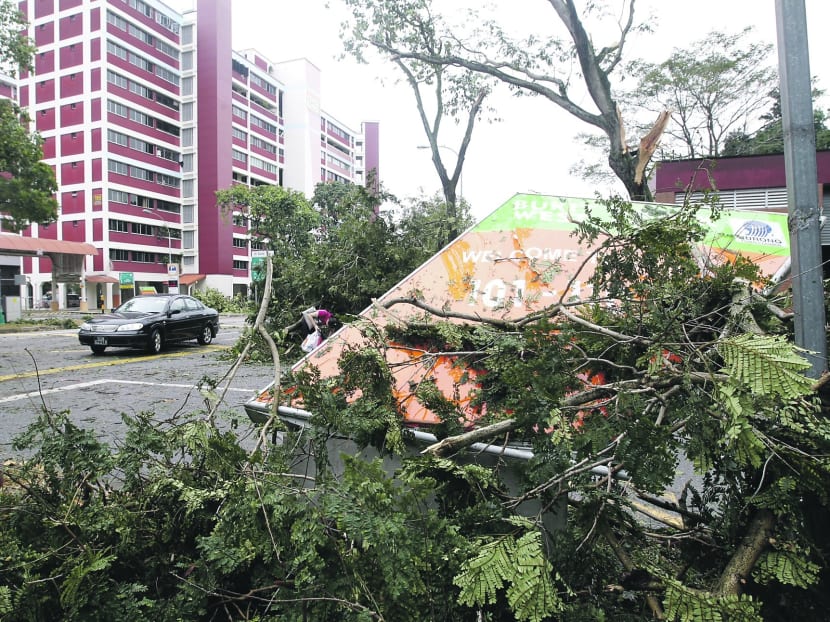Three-fold drop in incidents of falling trees since 2001
SINGAPORE — The number of incidents involving falling trees and branches has dropped three-fold since 2001, Senior Minister of State for National Development Desmond Lee said in Parliament on Tuesday (March 7).
SINGAPORE — The number of incidents involving falling trees and branches has dropped three-fold since 2001, Senior Minister of State for National Development Desmond Lee said in Parliament on Tuesday (March 7).
Responding to questions from Non-Constituency Member of Parliament Dennis Tan on tree management. Mr Lee said that there were around 3,000 such incidents recorded in 2001. That figure shrunk to 800 last year, against “a backdrop of around seven million trees”, where two million of them are along streetscapes and parks.
Speaking in Parliament during the debate on the budget for the Ministry of National Development, Mr Lee attributed the drop to the comprehensive tree management programme by the National Parks’ Board (NParks). However, he acknowledged that even with improved efforts, “we are deeply saddened every time such incidents (of falling trees) cause injury or loss of life”. For such cases, the NParks will provide assistance to the police. Independent arborists, who are trained in caring for and maintaining trees, may also be engaged on a case-by-case basis.
Last month, a falling tree at the Singapore Botanic Gardens killed one woman and injured four others. Two days later, a falling tree on Yuan Ching Road caused one woman to suffer serious head injuries.
Mr Lee said that NParks’ tree management programme includes a “rigorous regime of inspections and pruning”, which are aligned with international standards. Inspections are carried out by certified professionals, and the records are digitised and kept indefinitely.
The records allow NParks to focus attention on storm-vulnerable trees and pre-emptively replace them, he added.
Mr Lee assured the House that NParks has ramped up inspections, and taken steps to improve general tree health, including using pruning techniques to improve tree structure and balance.
The agency is also developing modelling techniques to understand better the structural behaviour of trees in microclimatic conditions as well as under heavy rain and wind, he said.







